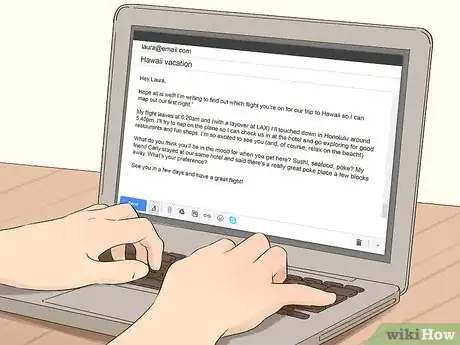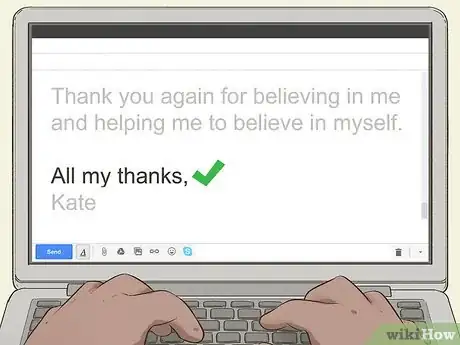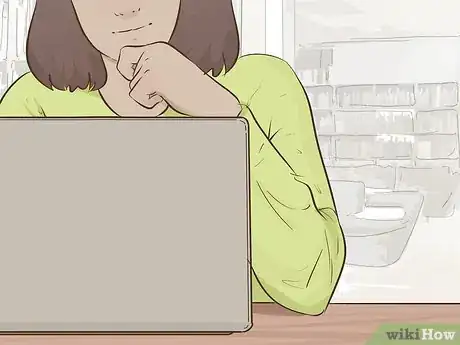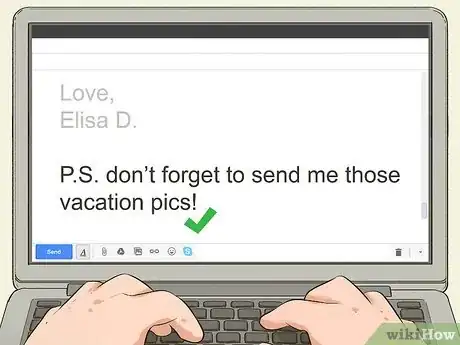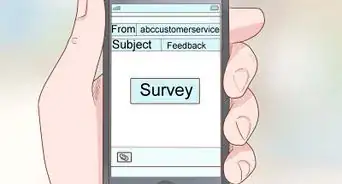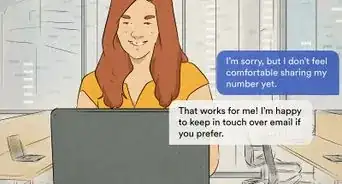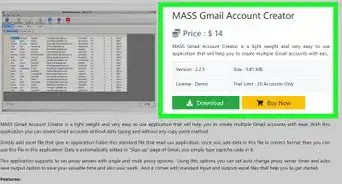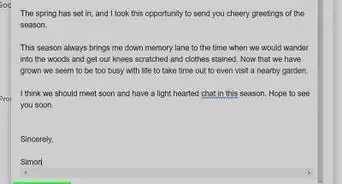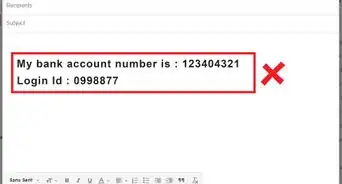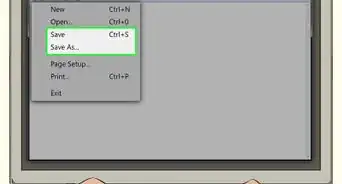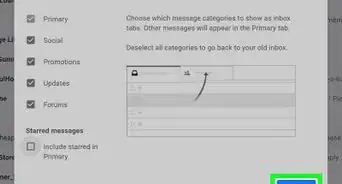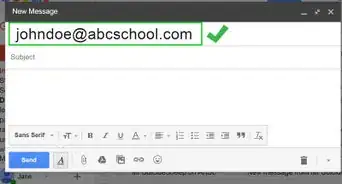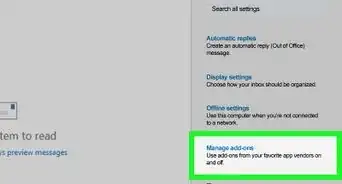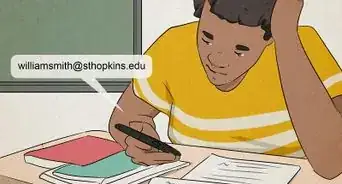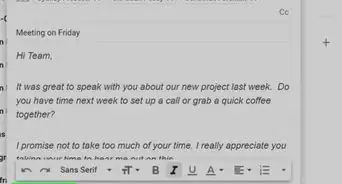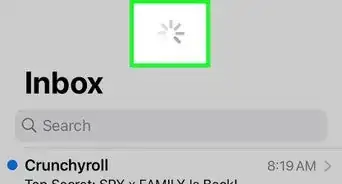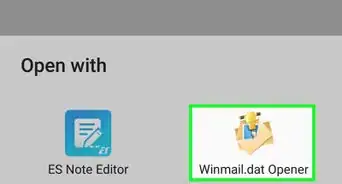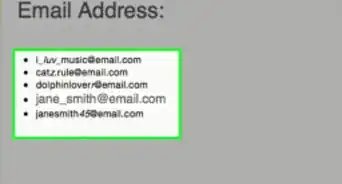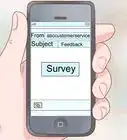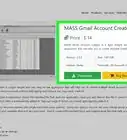This article was co-authored by wikiHow staff writer, Janice Tieperman. Janice is a professional and creative writer who has worked at wikiHow since 2019. With both a B.A. and M.A. in English from East Stroudsburg University, she has a passion for writing a wide variety of content for anyone and everyone. In her free time, you can find her working on a new crochet pattern, listening to true crime podcasts, or tackling a new creative writing project.
This article has been viewed 14,296 times.
Learn more...
Emails are a quick and easy way to communicate, especially when you’re reaching out to a friend. While texts are quicker to send, email makes it easier to send longer messages. Since email etiquette is important in the professional world, it might be tricky to figure out how to end a casual email that you’re sending to a close buddy. Before you break into any formalities with your friend, decide which sign-off you’d like to use, and take time to proofread and format your draft properly.
Steps
Signing Off
-
1Go over the purpose of your email. Look at the content of your email and figure out which emotion you want your email to convey. While there’s a good chance you’ll be talking to your friend in a casual tone, there could be work-related discussions throughout the email that might sound better in a formal and professional voice. Figure out how you want your email to sound before signing off the letter.[1]
- For instance, you might want to write with a more formal tone if you’re sending a wedding invitation over email to a close friend.[2]
-
2Use “Best regards” if you want to sound formal. End your email with a more generic sign-off if you don’t want to sound casual. While formal sign-offs are not really necessary when you’re emailing a friend, they can be useful if you can’t decide on a send-off to use.[3]
- The classic “Sincerely” or “Yours truly” always work in a pinch.
Advertisement -
3Include “Talk soon” if you expect to see your friend in the near future. Reaffirm your plans to chat in the future by signing off with a reminder of when you plan to talk next. This can be a subtle but effective way to communicate consistently with your friend.[4]
- If you want to take a broader approach, use “Until next time” or “Enjoy your day.”
-
4Conclude your email with “All my thanks” to show your gratitude. Let your friend know that you appreciate them by saying so in your sign-off. This is especially useful to include after a friend has helped you with something.[5]
- If you want to ask for a favor, say “Thanks for your consideration” or “Thanks in advance.”
-
5Add “XOXO” for an affectionate touch. Include “XOXO” as the sign-off when you want to show that you care about your friend, and that you’re thinking of them. While it may seem a little corny, “XOXO” is a classic way to share your love and affection in a quick way. Consider including it as a postscript, as well.[6]
- Add an email signature if you don’t want to type out your name at the end of every email.
-
6Decide if you want to include a sign-off altogether. Think about the friend you’re emailing and whether a written send-off is that important. While a lack of a sign-off can be viewed as casual in an email, it could be perfectly suitable for reaching out to a friend. If you’re talking to your friend frequently via email, you might be able to leave out a sign-off and signature altogether.[7]
- For instance, writing “toodles” at the end of your email might seem funny and clever at first, but sound more less fun after you read it aloud. Similarly, the comic factor of “later alligator” might come off as too childish for the message.
- Send-offs aren’t necessary if you’re emailing your friend a lot.
Proofreading and Formatting
-
1Leave 1 line of space above your name. Add your send-off to the email once you’ve picked something to close out your message. Consider leaving a line of space between the last paragraph and your sign-off. Many times, people will also leave a line of space between the sign-off and their actual signature.[8]
-
2Read the email aloud before sending it. Check over your draft and make sure that you’ve included everything that you wanted to mention to your friend. If you forgot something that was essential to your email, take however much time you need to add that information in.[9]
- Feel free to take out any information that seems irrelevant or pointless to the email.
- Reading your email out loud might help you find omitted words or other typos that you weren’t aware of.[10]
-
3Include a postscript to say something extra. Add an additional message to the end of your draft using a postscript, or P.S. While postscripts aren’t that common anymore, they can still provide a fun touch to your email when you use them. You can also use postscripts to include affectionate messages, like “Never stop being such a great friend!”[11]
- Postscripts also make it easier to include any extra information that you forgot to tell your friend in the main email.
References
- ↑ https://www.inc.com/the-muse/email-sign-offs-for-every-occasion.html
- ↑ https://www.vogue.com/article/wedding-invitations-online-evites
- ↑ https://www.inc.com/the-muse/email-sign-offs-for-every-occasion.html
- ↑ https://www.inc.com/the-muse/email-sign-offs-for-every-occasion.html
- ↑ https://www.inc.com/the-muse/email-sign-offs-for-every-occasion.html
- ↑ https://www.monster.ca/career-advice/article/what-your-email-signoff-says-about-you
- ↑ https://www.monster.ca/career-advice/article/what-your-email-signoff-says-about-you
- ↑ https://www.monster.ca/career-advice/article/what-your-email-signoff-says-about-you
- ↑ https://writingcenter.unc.edu/tips-and-tools/effective-e-mail-communication/
